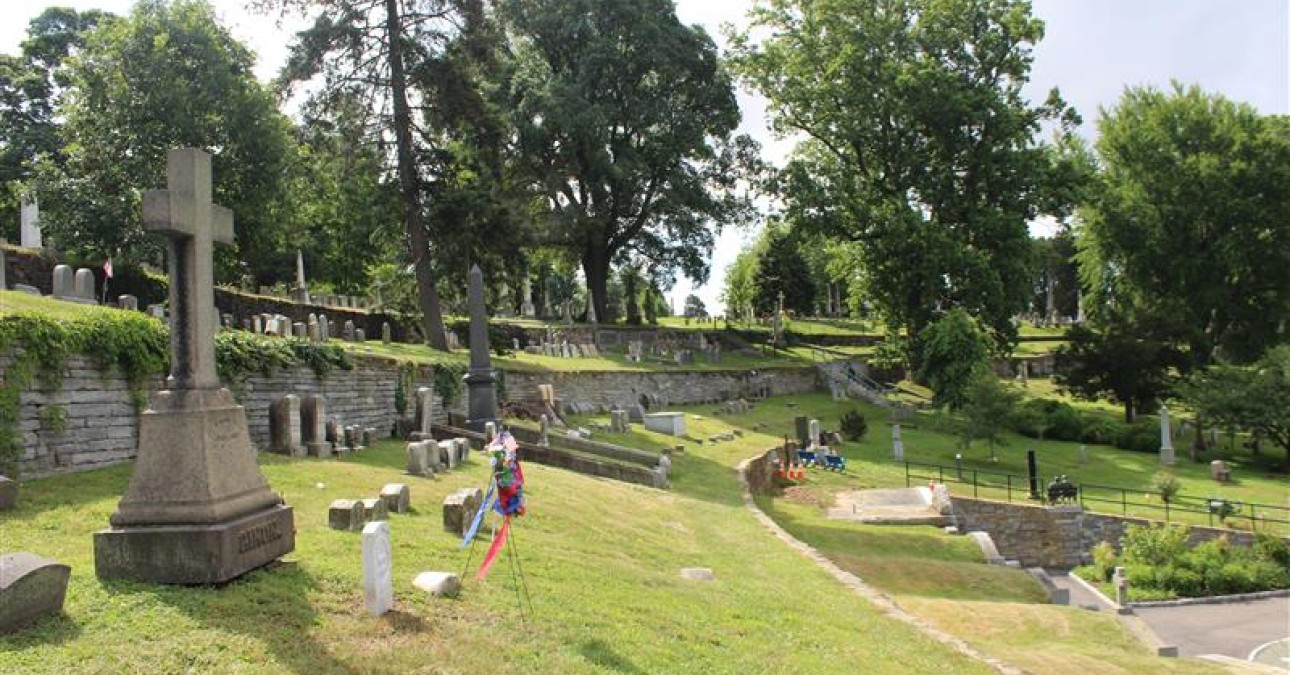
Case Study: Empowering A Historic Cemetery With A Sustainable Digitization Plan
Project Overview
Laurel Hill Cemetery, a National Historic Landmark established in 1836, holds nearly two centuries of burial records, lot maps, deeds, and correspondence that document Philadelphia’s rich cultural and social history. Like many historic cemeteries, Laurel Hill faced growing concerns over the fragility and inaccessibility of its archival materials but lacked a practical, in-house method for digitizing them safely and sustainably.
Because their mission is the preservation of the cemetery itself, none of the staff had experience with large-scale digitization of fragile records. To complicate matters, the cemetery had absorbed other organizations, such as local funeral homes, but these records remained in their original locations. Laurel Hill staff felt overwhelmed, unsure of where to begin, and confused by the recommendations they found online.
CCAHA’s services were engaged to develop a pilot digitization project and a scalable framework that would empower Laurel Hill’s staff and volunteers to carry the work forward independently, with confidence and care.
CCAHA’s Approach: From Pilot to Practice*
1. Assessment & Planning
The process began with an in-person visit to Laurel Hill by CCAHA’s Digital Archives Specialist, which allowed her to sit down with cemetery staff and discuss their biggest goals for—and worries about—large-scale digitization. The group explored how the cemetery’s mission and strategic goals could be supported by digital collections. Staff also provided insight into how they used the archival materials internally and what was of greatest interest to their patrons and researchers.
Next, the Digital Archives Specialist and Laurel Hill staff physically reviewed the historical collections to identify and prioritize high-risk, high-value records. They selected two types of materials for the pilot digitization project: one visual collection—a group of glass negatives—and one text-based collection—a series of records related to the families who originally purchased family plots. This variety allowed cemetery staff to gain experience with different handling techniques, imaging requirements, and metadata fields.
2. Pilot Digitization Project: Step-by-Step Design
Preparation & Handling Protocols
- Training staff and volunteers in safe handling techniques
- Introducing the use of supports and cradles for fragile bindings
- Recommending conservation measures for damaged items
Scanning & Equipment Recommendations
- Identifying affordable scanners and cameras suited to the collection materials
- Creating image quality guidelines (e.g., 600 dpi TIFF for preservation, JPEG for access)
- Designing a controlled digitization space with lighting and temperature considerations
Metadata & File Management
- Developing a simplified metadata template using Dublin Core along with cemetery-specific fields (e.g., plot number, interment date)
- Creating standardized file naming conventions for future consistency
- Organizing digital files with a logical directory structure for easy access and backup
Documentation & Training
- Producing a user-friendly digitization manual with step-by-step workflows
- Providing in-person training sessions for staff and volunteers
- Establishing a quality control checklist for review and version tracking
3. Building the Long-Term Framework
With the successful completion of the pilot, CCAHA delivered a comprehensive digitization framework that Laurel Hill staff could expand upon at their own pace. This included:
- A set of priorities for digitizing future record sets (e.g., lot maps, deeds, correspondence)
- Templates for creating official policies on digitization and digital collections
- Guidelines for selecting a digitization vendor for specific formats that cannot be handled in-house
- Recommendations for cloud storage, access platforms (e.g., Omeka), and digital preservation practices
Results & Impact
- Laurel Hill completed its first digitization project in-house, following safe and professional standards
- Staff and volunteers gained the skills and confidence to continue digitization efforts independently
- A structured framework is now in place to ensure sustainable digital stewardship for years to come
- The project has strengthened Laurel Hill’s ability to share its records with researchers, genealogists, and the public
*Note This is still an in-progress project. Numbers 2 and 3 refer to expected outcomes.
Photo credit: River terrace section of Laurel Hill Cemetery, June 2020. Dwkaminski, CC BY-SA 4.0.